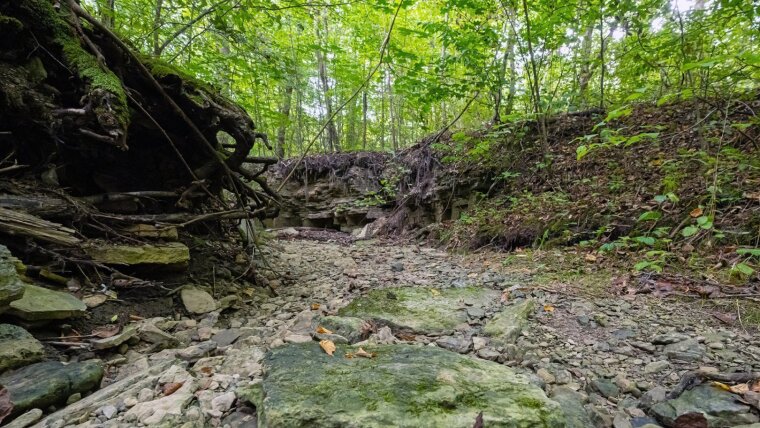
Extreme climatic events jeopardize the quality and stability of groundwater. When rainwater circumvents natural soil-based filtration processes, which can occur in heavy rainfall events, substances from the surface increasingly find their way directly into the groundwater. Researchers from the Max Planck Institute for BiogeochemistryExternal link demonstrated this in a long-term study conducted with a team from the University of Jena as part of the Collaborative Research Centre »AquaDiva« de.
By Eberhard Fritz
In a novel experimental approach, the research team led by Prof. Dr Gerd Gleixner defined dissolved organic
matter as an indicator of water contamination, which enabled them to identify fundamental changes in groundwater stability. »Our findings indicate that extreme weather events are already causing changes in groundwater quality and the manner in which it is replenished,« says Dr Simon Schroeter, the lead author of the study, which appeared in »Nature Communications«.
In fieldwork conducted between 2014 and 2021, the research term studied the groundwater and corresponding hydroclimatic conditions at three geologically different locations in Germany. They analysed water quality by tracing thousands of different types of molecules on their journey from the surface into the groundwater. In contrast to the standard method applied to date, which involves measuring the total concentration of dissolved organic carbon, this new approach made it possible to pinpoint changes in the levels and chemical composition of countless organic molecules.
Over the eight-year analysis period, the researchers identified a number of correlative long-term trends: increasing quantities of surface-derived organic substances accumulating in the groundwater, especially with falling groundwater levels. Furthermore, the researchers observed a distinct increase in water contamination since the extreme droughts in Germany in 2018.
New method serves as early indicator
This new method can detect changes in groundwater quality with far higher sensitivity than the standard carbon measurement technique. In the future, it could serve as an early indicator of deteriorations in groundwater quality before certain thresholds are reached. While the method relies on organic molecules as indicators of contamination, the actual contaminants can include any pollutants washed out of the surface soil. Genomic analyses of microorganisms in the groundwater can then provide insights into potential degradation pathways.
Groundwater is usually replenished by precipitation, which seeps through the soil. Impurities that are absorbed by the rain at the surface are usually removed via mineral sorption or metabolized by soil microbes as the water travels down through the soil. This natural filtration process leads to groundwater resources with high purity. On some occasions, however, rainwater can flow down to deeper layers of soil more quickly. In these cases, the water circumvents filtration, which leads to increased levels of dissolved matter from the surface and upper soil layers being transported into the groundwater.
This is particularly common following extreme rainfall and severe drought. Prolonged periods of drought lead to large cracks in the soil and also reduce the uptake of rainwater in the upper soil layers. When such conditions exist, rainwater flows more directly into the groundwater or, alternatively, into rivers, lakes and oceans. As a result, groundwater levels are not sufficiently replenished. In addition, the water is contaminated with undesirable and potentially hazardous substances from the surface and upper layers of soil. These include organic substances, herbicides, pesticides, microbial products such as antibiotics, and other foreign substances.
»The results of our research underscore the urgent need to establish sustainable water management in order to protect this vital resource,« emphasizes Prof. Gleixner, who led the study.
Original publication:Schroeter, S.A., Orme, A.M., Lehmann, K. et al.: Hydroclimatic extremes threaten groundwater quality and stability. Nat Commun 16, 720 (2025). https://doi.org/10.1038/s41467-025-55890-2External link
07745 Jena Google Maps site planExternal link